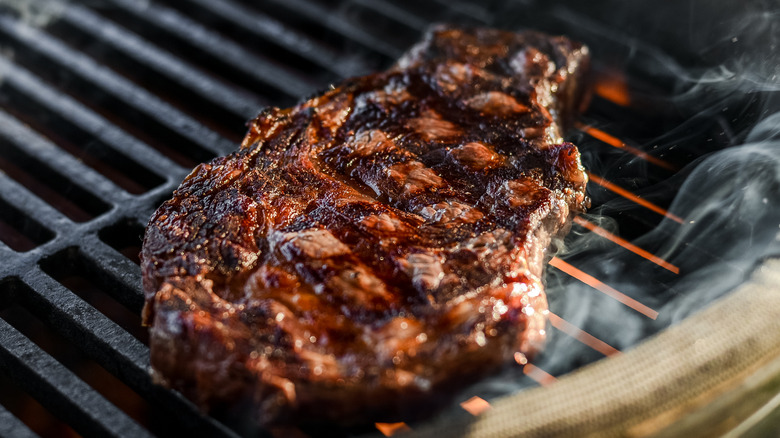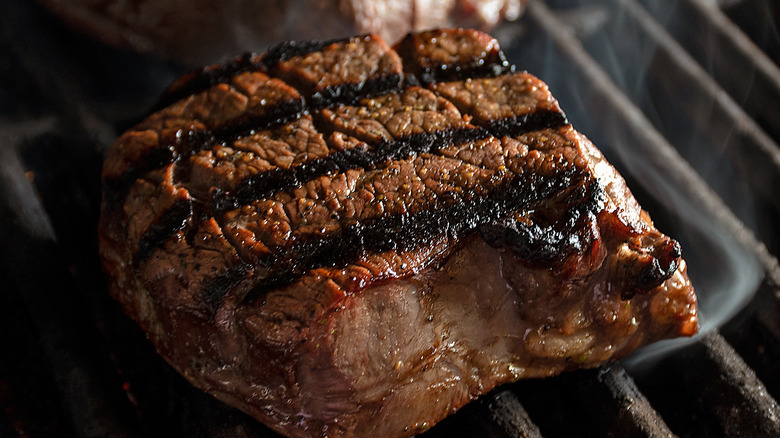Why You May Have To Give Up Perfecting Grill Marks On One Side
While many consider them to be nothing more than an aesthetic, there is something special about grill marks. Seeing those perfect, defined lines on meat, fish, and vegetables brings with it a sense of accomplishment. But grill marks do have their place in developing flavor, even if it is a small one.
Grill marks are an indicator that some amount of searing has taken place. Searing is a very important component in grilling — it is a product of the Maillard reaction, that browning of meat that simultaneously locks in flavor and retains moisture while the meat is exposed to the high temperatures of the grill.
Still, one does not want to sacrifice the quality of their meat just for the sake of some good looking grill marks. How the meat looks means absolutely nothing if it doesn't taste good. So, rather than focusing on getting perfect grill marks all around, focus on getting one side perfect and allow the other to be the sacrificial side — your palate will thank you.
Never sacrifice quality for appearance
There is really only one side that counts when it comes to grill marks: the first side that hits the grill. And while it pays to flip your steak and cook it for an even amount of time on both sides, the fluctuating heat of the grill may mean that the meat is closer to done than you think by the time you turn it over.
If your meat is nearing its desired doneness but hasn't spent enough time on its second side to develop perfect grill marks, this can risk it being overcooked. Removing finished meat before the second side has a chance to develop good grill marks will pay itself back in flavor and texture dividends. After all, this is not the side of the meat you are going to be showing off to your guests.
So while the wow factor may be slightly lessened by the fact that the sear doesn't translate to both sides, none of that matters once people start eating your perfectly cooked meat.

